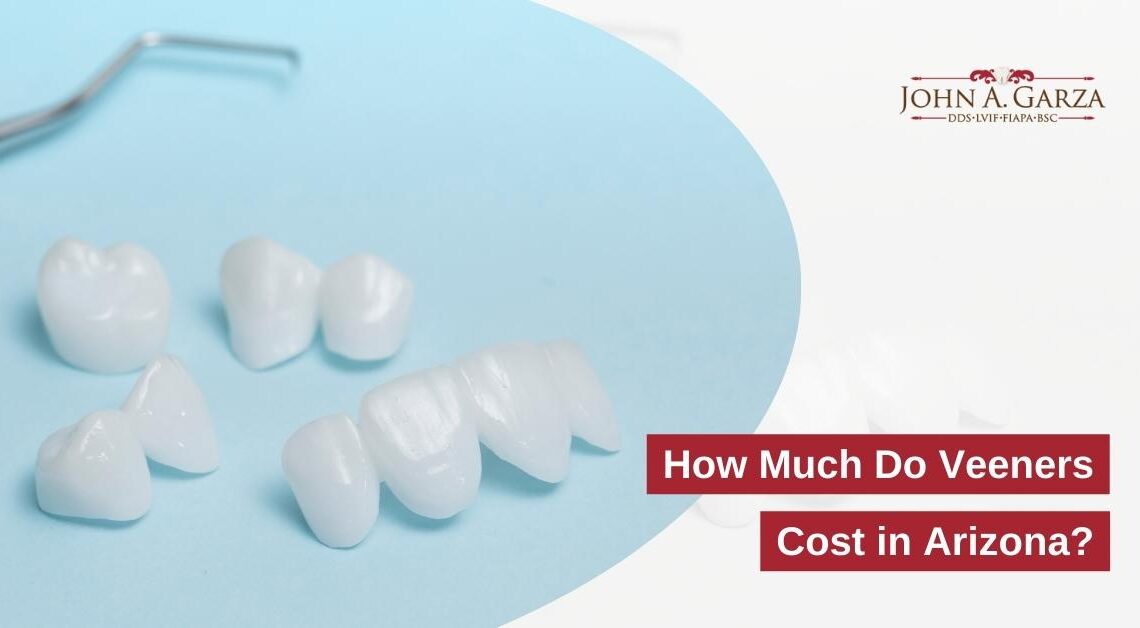When you decide to have veneers, the first thing that comes to mind is how much veneers cost. The honest answer is that it varies; the cost of veneers is determined by your objectives, the intricacy of the case, and the type of materials required; in short, various factors contribute to the cost.
As we answer how much veneers cost in Arizona, we will explore how veneers work and what factors affect the prices.
How Veneers Work
Dental veneers (sometimes referred to as porcelain veneers or dental porcelain laminates) are wafer-thin, custom-made shells constructed of tooth-colored materials that cover the front surface of teeth to improve their appearance. These shells are fused to the teeth’s front surfaces, altering their color, shape, size, and length.
Veneers protect your natural teeth by covering them with a wafer-thin layer of porcelain or similar composite material or composite resin. However, due to their prominence, many people prefer to have veneers on their front teeth only.
Veneers are applied by removing between 0.3 and 0.5 millimeters of the tooth’s surface in order to preserve the tooth’s nerve and maintain its full strength, ensuring that your veneers will endure a long time and that there will be little to no difficulty replacing them in the future. You do not need to cover every tooth with a veneer; only those that are troublesome and possibly adjacent teeth should be covered.
Your dentist can provide the best advice regarding the number of individual veneers you require and how to match their shape and color to the natural teeth surrounding the veneers. Additionally, you can get full veneers that entirely cover the tooth or partial veneers that cover only damaged or discolored regions, depending on the issues you’re trying to resolve and the state of your mouth.
The Cost of Veneers in Arizona
Veneers have the potential to improve the appearance of your smile significantly and are an excellent investment for people seeking aesthetic enhancement.
However, veneers are frequently not covered by insurance due to their classification as a cosmetic procedure. According to the American Dental Association, you should budget between $925 and $2,500 per tooth to get veneers.
Composite veneers range in price from $400 to $2,000 per tooth and typically last between five and seven years. In the long run, traditional veneers are frequently the most economical alternative.
The cost of your veneers is determined by several factors, including the type of veneers you select, the brand name available to your dentist, the cost of living in your area, and the dentist’s skill. For example, it can be substantially less expensive if you attend a clinic run by dentistry students overseen by dental school faculty dentists.
Porcelain veneers can have a profound impact on the appearance of your smile. The natural translucency of teeth is replicated by using only the finest materials. Each veneer is made specifically for you, according to your unique facial features.
Veneers can be costly because of the time and effort required to develop, design, and apply them. But the majority of patients believe that it’s a wise investment.
Other Factors to Consider
Whether you’re trying to correct discoloration, chipping, or crooked front teeth, dental veneers are one of the most effective cosmetic procedures available. The suitability of this treatment is established by a dental examination and the amount of the damage.
Type of veneer
Dental veneers are available in a variety of materials with varying price points. Tooth-colored porcelain is a popular choice among aesthetic dentists and patients because it is a durable material that closely resembles the properties of actual teeth. Additionally, we provide less expensive alternatives such as composite resin veneers, often known as dental bonding.
As a result, pricing for various porcelain veneers may vary based on the patient’s needs and the dentist’s preference or judgment.
Number of dental visits needed
Porcelain veneers are typically completed in two to three appointments. This includes the first consultation, the preparation session (during which a thin layer of the tooth’s enamel is shaved away), and the final veneer insertion. No-prep and composite veneers typically require fewer appointments due to the absence of prep work.
Technology used
Cosmetic dentistry has advanced tremendously. Nowadays, significantly more practical and successful procedures are used. The technology you choose will have an effect on the entire cost of porcelain veneers.
Number of veneers required
Veneers should be used to improve the appearance of visible teeth only, rather than all visible teeth, to keep treatment costs down. If you have two or more teeth repaired with veneers, you should pay less per tooth. Because you’re likely to receive greater savings for having more teeth, shop around and choose the most cost-effective choice.
Additional treatments
Veneers are most appropriate for those who have excellent oral health. Additional procedures may be recommended to improve your candidacy if you have dental decay, a root canal infection, or periodontal disease. While these additional treatments increase the overall cost, they ensure the success and endurance of your veneers.
Contact Garza DDS to learn more about permanent veneers cost
If you are considering veneers, we encourage you to contact our office for a consultation. We will work with you to develop a treatment plan that meets your needs and provides the best possible results. Our team is experienced in providing comprehensive dental care, and we are confident that we can help you achieve the beautiful smile you deserve.


